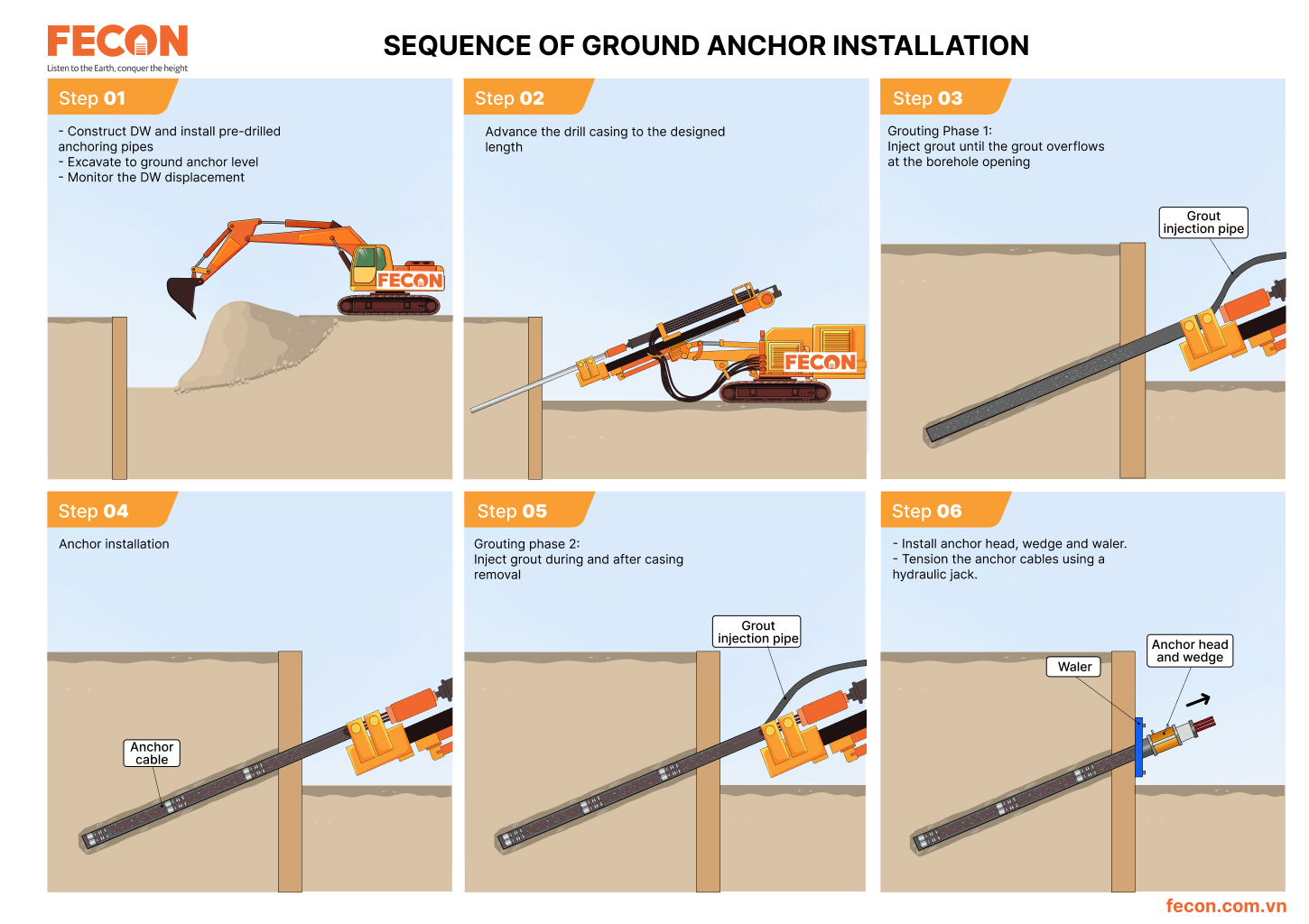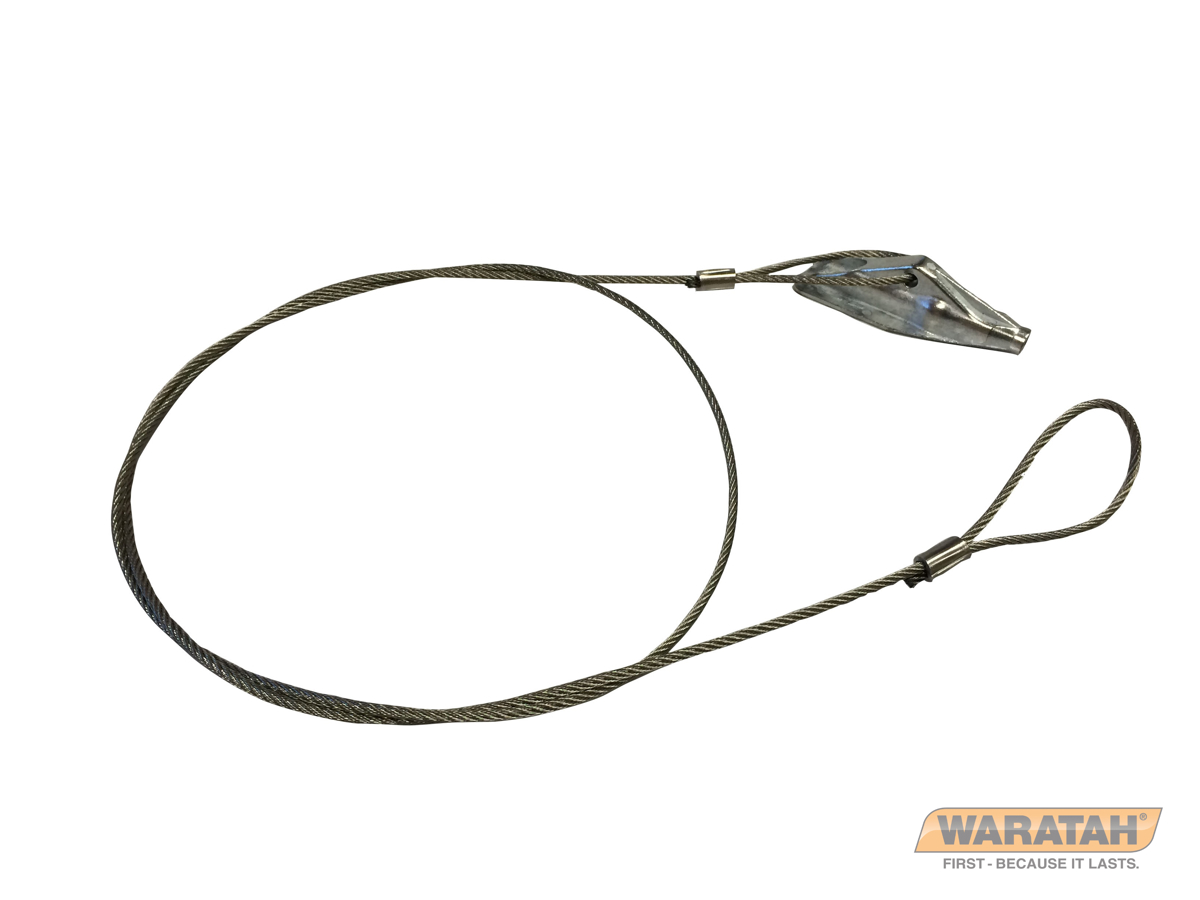Why Choose heavy-duty earth anchors Over Conventional Systems
Wiki Article
Exactly How Sturdy Earth Anchors Work: A Comprehensive Overview to Dirt Anchoring Solutions
Durable Earth supports play a vital role in giving security and support in numerous building and construction applications. By installing deeply right into the ground, they resist upright and lateral pressures effectively. Various sorts of anchors accommodate various soil conditions, making them versatile. Understanding their mechanics and installment techniques is necessary for maximizing efficiency. What factors affect their effectiveness, and how do they contrast to typical approaches? The answers may amaze you.Understanding Durable Earth Anchors
Heavy-duty Earth supports function as vital elements in different construction and landscaping jobs, supplying security and support in difficult soil problems. These anchors operate by being embedded into the ground, where they withstand lateral and vertical forces. Their layout enables secure attachment to structures, ensuring they continue to be anchored against dirt motion or exterior loads.The effectiveness of durable Earth anchors greatly relies on the kind of dirt and the anchor's setup deepness. Correct setup strategies are essential, as they figure out the anchor's holding capability. Ecological elements, such as dampness and freeze-thaw cycles, can also affect performance.These supports are frequently utilized in applications varying from securing fences and maintaining wall surfaces to stabilizing momentary frameworks during damaging climate conditions. Recognizing the principles behind sturdy Earth supports is important for experts seeking to enhance the toughness and safety and security of their projects.Sorts Of Heavy-Duty Earth Anchors
Different kinds of heavy-duty Earth supports are made to meet details requirements based upon dirt problems and task demands. Helical supports, featuring screw-like blades, are efficient in softer soils, providing high lots abilities and very easy installment. Driven supports, which are hammered into the ground, appropriate for rocky terrains and supply instant lots assistance. Tie-back anchors are generally made use of in keeping wall surface applications, permitting side assistance by securing right into the ground at an angle. Another kind is the cast-in-place support, ideal for concrete applications, as they are integrated right into structures for enhanced security. Dirt screw supports are flexible alternatives that can be made use of in various dirt kinds, offering dependable stress and compression capacities. Each type offers unique applications, making certain security and security in building and landscape design projects. Comprehending these choices permits informed choices in selecting the proper Earth securing service.The Mechanics of Dirt Anchoring

Understanding the mechanics of soil anchoring calls for an evaluation of different kinds of Earth supports and their installation methods. Each anchor type offers one-of-a-kind qualities that influence its performance in various dirt problems. Correct installment techniques are vital for taking full advantage of the securing system's stability and efficiency.
Kinds Of Earth Anchors
Earth anchors, vital parts in dirt anchoring systems, come in a number of kinds, each designed for certain applications and soil problems. The most typical types include screw supports, which are turned right into the ground, supplying solid side resistance. Helical anchors feature blades that allow for effective setup in various soil types, making them ideal for both momentary and irreversible applications. Driven anchors, normally made from steel, are hammered right into the soil and work in rough or dense atmospheres. Auger supports use a helical style to help with installment in softer dirts. Lastly, plate supports contain a level plate hidden flat, distributing load over a bigger location, suitable for applications needing high tons capacities in cohesive dirts.Installation Strategies Explained
Correct installation strategies are essential for the efficiency of soil anchoring systems. The procedure commonly starts with site assessment, validating the picked place can sustain the support's load. After figuring out the correct support kind, appropriate opening depth and angle need to be developed. The setup includes driving the support right into the ground making use of specialized equipment, such as hydraulic or manual vehicle drivers, to accomplish best embedment. Post-installation, tensioning the anchor is essential to ensure stability; this is typically validated with load screening. In addition, surrounding soil problems ought to be kept an eye on to protect against displacement. Adhering to these techniques not just boosts the anchor's efficiency however also prolongs its life-span, providing reputable assistance for various applications.Applications of Heavy-Duty Earth Anchors
While heavy-duty Earth anchors are usually connected with building and landscape design, their versatility reaches a range of applications across various industries. In civil engineering, they give important assistance for retaining wall surfaces, making certain security in areas prone to dirt erosion. The marine sector makes use of these supports for securing anchors and marinas, preventing motion caused by trends and currents. In addition, in the telecommunications industry, durable Earth supports are substantial for supporting cell towers and other high structures versus wind forces. Agricultural applications also benefit, as these supports can secure structures like greenhouses and livestock fence, ensuring they endure extreme climate condition. In eco-friendly power projects, such as wind ranches, Earth supports play an important duty in safeguarding generator foundations, boosting general safety and performance. This wide range of applications highlights the adaptability and integrity of durable Earth anchors throughout numerous fields.Advantages Over Standard Anchoring Methods
Conventional anchoring approaches have actually long been counted upon for security, durable Earth supports supply substantial advantages that boost performance and efficiency. One major advantage is their premium load-bearing capability, which enables them to withstand greater pressures without failing. This toughness makes them optimal for requiring applications, such as in building and construction and utility installations.Additionally, sturdy Earth supports are designed for much deeper setup, giving better stability in various soil conditions, including sandy or loose dirts. Their resistance to rust and ecological elements guarantees a fantastic read a longer life-span and lowered maintenance costs contrasted to standard methods.Moreover, these supports can be set up with marginal disruption to the surrounding area, protecting the stability of the landscape. On the whole, sturdy Earth supports offer a effective and trustworthy option for securing demands, surpassing the restrictions frequently linked with traditional anchoring strategies.Setup Process and Ideal Practices
The setup process for soil anchoring solutions begins with detailed prep work and website evaluation to guarantee peak efficiency. Following this, a step-by-step installation guide provides clear guidelines for efficient execution (heavy-duty earth anchors). Adhering to these ideal methods is important for achieving durable and dependable anchoring outcomesPrep Work and Site Assessment
Efficient prep work and complete website examination are important steps in the setup of dirt securing options. Before installment, the dirt kind must be analyzed to identify its bearing capacity and suitability for securing. Conducting a geotechnical survey can supply vital details regarding dirt structure, moisture degrees, and prospective ground activity. In addition, identifying existing frameworks, greenery, and utilities is important to prevent disturbance throughout setup. The area needs to be free from particles and obstacles to ensure risk-free accessibility for equipment. Weather should also be monitored, as adverse conditions can affect both safety and installment effectiveness. By diligently preparing the website and evaluating all relevant variables, the possibility of effective anchor performance is significantly raised.Step-by-Step Installment Guide
A comprehensive installment procedure is important for achieving excellent performance of dirt anchoring remedies. The installation starts with picking the ideal support type and assuring the site is clear of debris. Next, appropriate hole positioning is identified based upon tons needs. Once the place is developed, openings are drilled to the defined depth and size making use of the appropriate devices. The anchor is after that put into the hole, making certain it is straightened properly. After securing the support, soil is backfilled and compressed to improve stability. It is vital to follow manufacturer standards throughout the process. A post-installation inspection confirms that the anchors are sufficiently located and functioning as intended, offering dependable support for the intended application.
Upkeep and Inspection of Earth Anchors
Routine maintenance and assessment of Earth anchors are necessary for ensuring long-term efficiency and security. Periodic checks permit the early detection of concerns such as rust, loosening up, or soil motion. Inspectors need to try to find indicators of rust or deterioration on the support parts, particularly at the link factors. Furthermore, the bordering soil should be examined for erosion or changes in moisture web content, which can impact support effectiveness.It is suggested to establish a routine evaluation timetable, preferably at the very least yearly, relying on ecological problems. During assessments, all visible components should be cleaned to eliminate dust or debris that can hide possible problems. Any kind of indications of distress, such as turning frameworks or unusual settling, need to trigger immediate assessment. Appropriate documents of assessments can aid in tracking anchor performance gradually and promote prompt maintenance activities, making certain the supports stay reliable and useful.Regularly Asked Concerns
What Materials Are Heavy-Duty Earth Anchors Normally Made From?
Sturdy Earth anchors are normally created from resilient materials such as galvanized steel or stainless-steel, making certain strength and resistance to rust. These materials supply durable assistance and stability in numerous dirt conditions and applications.How Do Soil Conditions Influence Anchor Performance?
Soil conditions considerably influence anchor performance. Elements such as soil kind, moisture web content, and compaction influence the support's grip and security, with cohesive soils commonly offering far better resistance than loose or sandy soils, impacting total effectiveness.
Can Heavy-Duty Earth Anchors Be Recycled After Removal?
Sturdy Earth anchors can be recycled after removal, provided they are checked for damages and wear. Proper cleaning and upkeep boost their long life, making sure reliable performance in succeeding installments when problems permit safe reinstallation.What Are the Ecological Effects of Utilizing Earth Anchors?
The ecological impacts of making use of Earth supports consist of possible dirt disruption, disruption of regional environments, and possible contamination his response of groundwater. However, if made use of responsibly, their advantages commonly exceed these issues, promoting stability in numerous applications.How Do I Pick the Right Support for My Project?

Report this wiki page